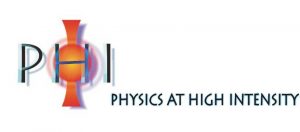Thesis
Exploration of the energy deposition dynamic on short time scale with laser-driven electron accelerator in the context of the Flash effect in radiotherapy
Radiation-matter interactions
The objective of the thesis project is to analyze the physicochemical processes resulting from the extreme dose rates that can now be obtained in water with the ultra-short (fs) pulses of relativistic electrons produced by laser-plasma acceleration. Indeed, first measurements show that these processes are probably not equivalent to those obtained with longer pulses (µs) in the FLASH effect used in radiotherapy. To achieve this, we propose to analyze the dynamics of formation/recombination of the hydrated electron, an emblematic species of water radiolysis, to qualify and quantify the dose rate effect over increasingly shorter times. This will be done in three stages in support of the necessary and now accessible technological progress, to have a dose per pulse sufficient to directly detect the hydrated electron. First, with the existing UHI100 facility, using the scavenging of the hydrated electron by producing a stable species; then producing a less stable but detectable species in real time and increasing the repetition rate of the electron source. Finally, by using an innovative concept named a “hybrid target”, based on a plasma mirror as an electron injector coupled to a laser-plasma accelerator, delivering larger doses with a narrower energy spectrum, we will be able to develop pump-probe detection allowing access to the shortest times, and to the formation in clusters of ionization, of the hydrated electron and measuring its initial yield.
SL-DRF-25-0355
acceleration laser-plasma, chimie sous rayonnement
October 1 2025
Paris-Saclay
Ondes et Matière (EDOM)
Saclay
CEA
Direction de la Recherche Fondamentale
Institut rayonnement et matière de Saclay
Service Laboratoire Interactions, Dynamique et Lasers
Physique à Haute Intensité



